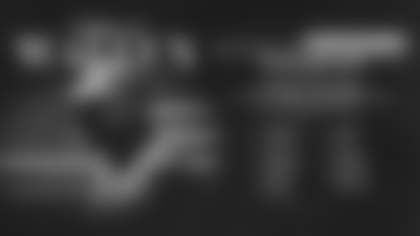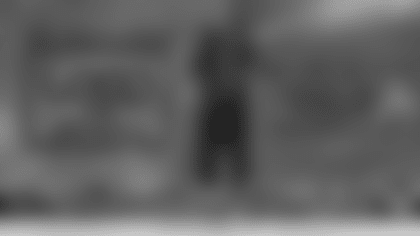For Young Defensive Tackles, Adjusting to Speed of NFL Will
be Key
INDIANAPOLIS – The adjustment won't necessarily be easy.
That's true of Fili Moala and Terrance Taylor, two defensive tackles selected by the Colts in the 2009 NFL Draft, and while it's true of any NFL rookie, Colts Head Coach Jim Caldwell recently discussed the specifics involved in adjusting to life on the interior of an NFL defensive front.
NFL players are bigger, and yes, they are for the most part better than the players against which rookies played in college.
But Caldwell said the biggest difference is often something that rookies don't always consider.
It's subtle, not always easy to see on television.
But Caldwell said it's real and rookies see it quickly.
"The speed at which everything happens," Caldwell said during the Colts' recent three-day rookie mini-camp, where Moala, Taylor and about 30 other rookies and first-year players worked on getting acclimated to the Colts' system.
Moala, the Colts' second-round selection from the University of Southern California, and Taylor – a fourth-round selection from Michigan – each were productive at the highest level of college football.
Moala (6-feet-4, 303 pounds), who played all four collegiate seasons, started 38 of 52 games for Southern Cal, a total that included his last 33 games. He finished his Southern Cal career with 90 tackles, including 30 this past season. While Moala played mostly right defensive end in the Trojans' 3-4 scheme, Colts President Bill Polian said Moala's experience at Southern Cal and his style translates well to the Colts one-gap, penetrating style of defensive line play.
Moala had 9.5 sacks at Southern Cal and 23.5 tackles for loss.
"That's where my love is, playing on the inside and doing the dirty work," Moala said. "I just want to prepare myself to contribute wherever that means."
Taylor (6-0, 319), the No. 136 overall selection of the fourth round, started three seasons at nose tackle for Michigan, and Polian shortly after the draft called him a more prototypical nose tackle than the Colts have had in recent seasons. He started 36 games at Michigan and registered 17.5 tackles for loss and six sacks. He had four tackles for loss and 1.5 sacks this past season as a senior.
And while Polian and Caldwell each said that improving the defensive interior was a draft-day priority, and while each said size was imant to that end, Caldwell said during the minicamp that the Colts still want a little more from the position than raw size.
The Colts last season finished 24th in the NFL in rushing defense, allowing 122.9 yards per game.
"I think it's a bit more to it than just simply a size matter," Caldwell said. "I've mentioned before that bigger doesn't always mean better. It's a combination of being able to certainly improve your strength and being able to play effectively at whatever size you are. If you can do the things that we require in our scheme with a little bit more weight on, then obviously that's a plus."
Caldwell, after becoming head coach in January, hired Larry Coyer as defensive coordinator, and although Caldwell said there will be changes in the defensive scheme, he said the changes in approach "from a schematic standpoint" on the defensive front's interior will be minor.
"There are going to be probably just some slight tweaks here and there but nothing drastic in that regard," Caldwell said. "We anticipate the results are going to be that we are going to be better in some areas in which we were weak."
And while Caldwell said the two rookies will be adjusting in coming months on several fronts, the biggest area is the pace at which their new opponents will be playing.
"One of the things that I think often times they have a misconception about is how quick people move, particularly on the other side of the ball, the guys that are attempting to block them," Caldwell said. "Often times they are big, but they are also quick. That's the thing I think they have to get accustom to, the speed of the game."















